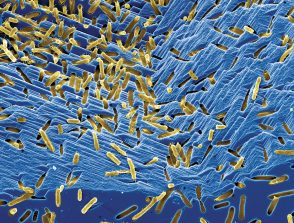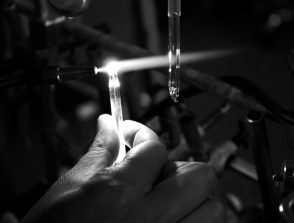The origin of nitrogen in Earth’s mantle constrained by 15N-15N measurements
17/05/2023
IPGP - Îlot Cuvier
14:00
Séminaires thème Intérieurs de la Terre et des planètes
Salle 310
Jabrane Labidi
IPGP
https://cnrs.zoom.us/j/94250860262?pwd=d0dMMUVHbEdHaVV4WGR3WE1CbUNBZz09
ID de réunion : 942 5086 0262
Code secret : 3B58RA
The abundance and isotope composition of nitrogen in plume and arc sources help constraining the deep nitrogen cycle. However, fresh glasses with mantle-derived volatiles are rare or absent on plume and arc volcanoes. One may study hydrothermal gases, since they are more plentiful than the small quantities of gas accessible from mantle-derived rocks. However, gases are often more contaminated by air than glasses, and their 15N/14N ratios are ambiguous.
We will present 15N15N data that allows tracing the provenance of nitrogen in gas mixtures. The approach is based on the recent finding that atmospheric N2 has an enrichment in 15N15N of nearly 20‰ relative to volcanic N2. In a first section of the presentation, published data from samples taken sporadically on various volcanoes will be shown. Important findings include that 15N/14N ratios may be fractionated in the sub-surface. Samples with atmospheric 15N15N values show variable 15N/14N ratios, almost always resulting in light d15N values. The data requires the 15N/14N isotope fractionation of atmospheric N2 occurs in the sub-surface and reflects an open-system water-gas isotope exchange. This is important, since the light d15N are similar to estimates for mantle values, yet the 15N15N data preclude a mantle origin.
In a second section of the presentation, we will discuss the potential for rapid fractionations in the sub-surface of a given set of vents. We will present new 15N15N data acquired on two vents from the Soufrière de Guadeloupe. Samples were taken regularly on the “South-crater” and “Napoleon” vents, from October 2018 to April 2021 (n=33). We find temporal variation for nitrogen 15N15N that covers most of the published variations, in just two vents. We establish that a reservoir of fractionated nitrogen contributes to the Soufriere vents throughout our period of investigation. Volcanic nitrogen is also observed to feed the vents, on the basis of near-zero 15N15N enrichments. It has a positive d15N and appears constant through time. The implications of our work for the origin of high-temperature nitrogen in the Guadeloupe vents will be discussed.







